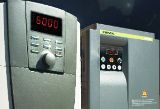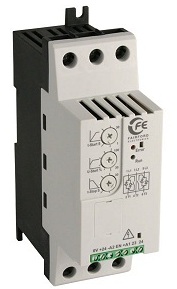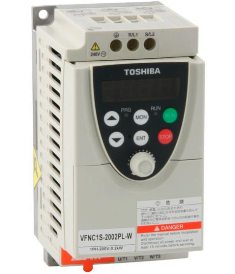Differences between frequency converters and motor soft starters
 The use of asynchronous motors in various industries is fully justified. And it is not at all surprising that for many purposes and tasks it is simply necessary to adjust the starting torque of the motor, the starting current, the operating torque, the speed of the motor, etc. In many cases, this not only ensures a stable and long service life of the electric motor and related equipment, but also increases savings, that is, makes energy consumption optimal.
The use of asynchronous motors in various industries is fully justified. And it is not at all surprising that for many purposes and tasks it is simply necessary to adjust the starting torque of the motor, the starting current, the operating torque, the speed of the motor, etc. In many cases, this not only ensures a stable and long service life of the electric motor and related equipment, but also increases savings, that is, makes energy consumption optimal.
The main problem with induction motors is that it is impossible to match the starting torque with the load torque. In addition, there is a large starting current exceeding the nominal 6-8 times, and this is not always safe both for the stability of the power network and for the motor itself, especially if the load is not coordinated with the start at all.
Soft starters and frequency converters come to the rescue.
When required starting current limit, and to accelerate the motor to rated speed, increasing the voltage, that is, by adjusting the amplitude, it is useful to use a soft starter. It is particularly suitable for starting equipment under lightly loaded conditions and at idle.

It is clear that it will not be possible to adjust the operating speed of the motor with its help, but the soft starter will provide protection against overload, since it itself has 4-5 times more resistance to overcurrent than the motor.
One of the advantages of soft starters is the shutdown in emergency situations and is very fast in time, especially if used in conjunction with modern protection controllers. So the emergency shutdown time can be no more than 30 ms, while it has the character of a soft thyristor shutdown at zero and the risk of overvoltage is excluded.
As a rule, soft starters are equipped with a system for monitoring the engine speed, and when the speed is close to the nominal, the soft start function is disabled, and regardless of the load, without knocking, the engine goes into normal operation under load.
Thus, the soft starter is suitable if it is necessary to limit the starting torque, starting current and protect against overload, but it will no longer allow it to regulate and stabilize the speed.
Frequency regulation of asynchronous electric motors is also widely used throughout the world. Here, the rotational speed of the induction motor shaft is varied by electronic frequency converter… The change in frequency and amplitude of the three-phase voltage supplied to the motor determines the way it operates.

The frequency control is able to provide motor operating speed both above and below the rated level, and with high accuracy. When the load is variable, the speed stabilizes and you can save a lot of energy without wasting unnecessary waste.
Soft start is also achieved by frequency control, which reduces wear and increases the life of the equipment as a whole. If required, the required starting torque can simply be set and the braking controlled.
Thus, the frequency converter is useful when more control capabilities of an induction motor are required, including speed regulation and stabilization, starting torque limitation, as well as safe braking, that is, when overall control optimization is important.
The use of frequency converters in air conditioning, ventilation and water supply systems is economically highly justified. Consider the benefits of using frequency converters directly to control pump sets. The pumping units of the water supply system rotate at the same speed, regardless of the intensity of the water supply.
At night, when water consumption is minimal, the pumps simply create excess pressure in the pipes, wasting electricity, or they could reduce the speed, thanks to frequency regulation using frequency converters, and so the speed of the motors in the pumps would change depending on specific needs under specific conditions. This will not only save energy, but also save the resource of the equipment and reduce the leakage of water into the electrical network.
